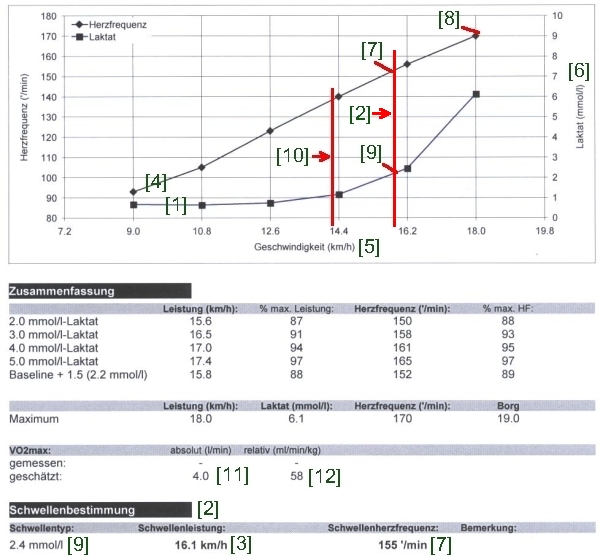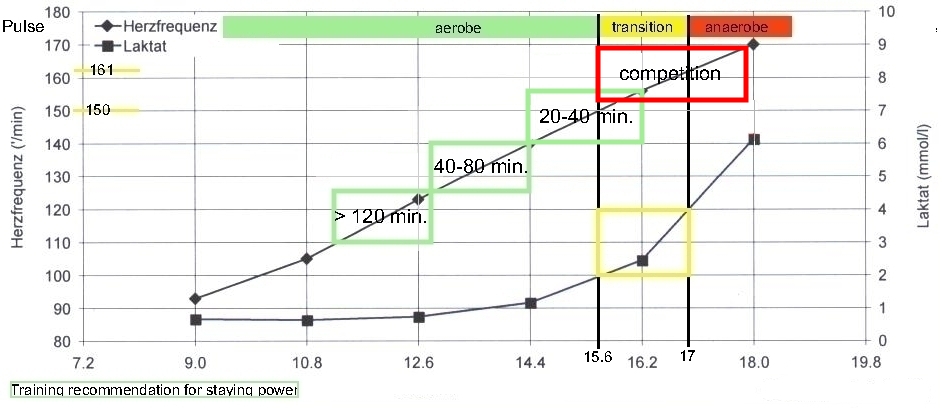Once the lactate curve has been plotted, the anaerobic threshold can be determined. A sudden or sharp rise in the curve above base level [1] is said to indicate the anaerobic threshold. However, from a practical perspective this sudden rise or inflection is often difficult to pinpoint. My anaerobic threshold [2] occurs at about 16.1 km/h [3]. This means, in theory I can maintain a pace at or just below 16 km/h for a prolonged period, indefinitely. Of course, this is purely hypothetical as there are many other factors involved in fatigue - not least the amount of carbohydrate stored in reserve. A crossover to fat metabolism will significantly reduce my race pace. By recording heart rate [4] data alongside workload [5] and blood lactate levels [6], I can use a heart rate monitor to plan and complete training sessions. E.g., at Zumiker run of 11.2 km, 5°C, my mean pulse was 154 [7], max. 171 [8]. Meaning my Lactate was sharp at threshold of 2.4 mmol/l [9]. Of course, I didn't run at lab-threshold-speed of 16.1 km/h but average 14.3 km/h [10] over the hills. Calculated VO2max: absolute 4.0 l/min [11], relative 58ml/min/kg [12]. |
|
For training's over 2 hours I should run below 12.7 km/h, well in the stabilisation range. If I want development, I run 40 to 80 minutes at speed from 12.7 to 14.4 km/h. Or I might speed up some more for short runs of 20 to 40 minutes. At competition for distances as far as marathon, the heart rate better stays below 170. Above mentioned speed has to be degraded depending on temperature, humidity terrain etc. |
|


